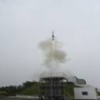Scientists have found a low-cost solution called nanosecond laser surface texturing to increase lubrication of the moving parts within the engine can enhance engine performance. Internal combustion (IC) engines represent a backbone of modern transport, with millions of vehicles run worldwide. Still, their efficiency leaves room for improvement. One big challenge to the performance of an IC engine is the friction and wear between moving parts, which causes enormous energy loss and, as a result, low fuel economy.
Researchers at the International Advanced Research Centre for Powder Metallurgy & New Materials (ARCI), an autonomous R&D Centre of Department of Science and Technology, Govt. of India, have come up with a solution to address this problem, and that is nanosecond laser surface texturing. This timely approach seeks to enhance tribological performance (lubrication of the moving parts within the engine) in gray cast iron applied to a diversity of critical engine components, which include piston rings and cylinder liners.
A significant proportion of the energy supplied to IC engines is lost due to thermal and frictional dissipation. The frictional losses for IC engines are nearly 50% in the piston-cylinder system. Of these, it has been found that 70%-80% occur in the piston rings: top compression ring, oil control ring, and second compression ring. The extent of these losses depends largely on the tribology – the study of friction, wear, and lubrication of the moving parts within the engine.
This tribological performance is, in turn, influenced by the geometry and texture of the surfaces in contact. Specifically, textured surfaces can serve multiple functions. First, they can act as reservoirs for lubricants, allowing oil to be delivered more effectively to the contact zones where friction occurs. Second, they can trap wear debris, thereby reducing abrasive friction. Third, textured surfaces have the potential to improve hydrodynamic lubrication, which occurs when a full film of lubricant separates two surfaces, thus minimizing contact and reducing wear.
Historically, what has been done to improve tribological performance is that various surface texturing technologies have been applied, such as vibrorolling, abrasive machining, reactive ion etching, lithography, abrasive jet machining, and chemical etching.
All of these try to make micro-textures on the material surface so that it can enhance lubrication and reduce friction. However, a common drawback of these processes is the lack of uniformity in the surface patterns and reproducibility they produce.


